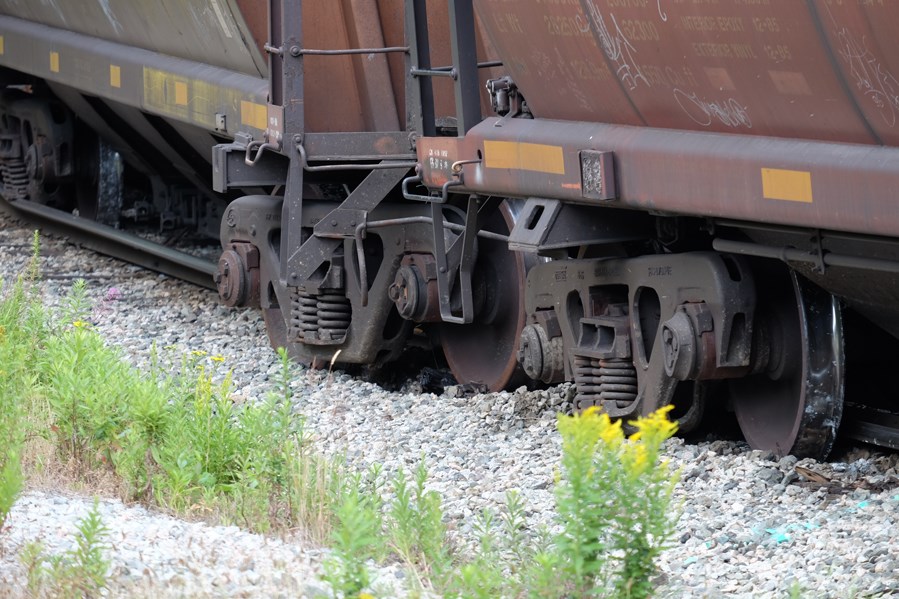A broken track has been determined to be the cause of a five-car train derailment at the Quay in July.
The city’s railway community advisory panel got a verbal update about the July 21 incident at its September meeting. During the incident, trains were off the track in the area near the McInnes Street overpass, temporarily blocking vehicle traffic at the Begbie Street crossing to the Quay.
“It was caused by a broken track,” said Coun. Chuck Puchmayr, co-chair of the committee. “The train derailed when it went over that track. It was a very heavy train.”
Puchmayr questioned railway officials why the train engine didn’t stop sooner, noting it didn’t stop until it was 100 metres from the break in the track. He said some of the track “flipped” over so the train cars didn’t immediately leave the track.
“Some of the train was actually riding on the side of the tracks – so it would have not given the impression that there was a derailment,” he explained. “The locomotive may not have reacted to it as quickly because of that.”
Puchmayr said it’s unclear whether the train that derailed broke the track or if it had broken earlier.
“That track was inspected that week, a visual inspection,” he said. “They run along it and they do a visual on the track.”
Southern Railway, which operates on some of the tracks in New Westminster, has purchased a machine that is pulled or pushed by a train and X-rays tracks to assess their condition. Puchmayr hopes it will be used on track systems in New Westminster.
According to Puchmayr, the railway companies investigated and concluded that speed wasn’t the cause of the derailment of a CP train in CN’s work yard.
Five train cars filled with grain derailed along Quayside Drive on July 21. Fire Chief Tim Armstrong told The Record in July that a rail car carrying crude oil was at the tail end of the train, but it wasn’t involved in the derailment.



